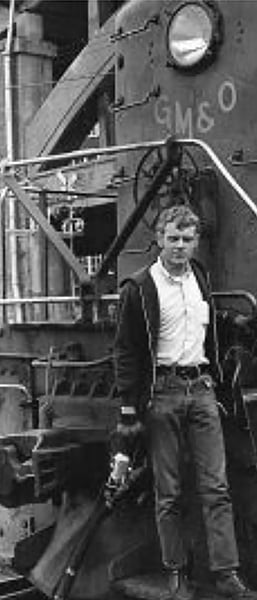Following the 2023 East Palestine derailment and an eerily similar incident later that same year in their home state, SMART-TD members in Colorado helped pass a law that created a state Office of Rail Safety.
SMART-TD’s Colorado Safety & Legislative Director Carl Smith serves on the Office’s Community Rail Safety Advisory Committee and is optimistic about the statewide impact this entity will have once it’s fully operational.
“This is going to give access at the state level to, in theory, put more state inspectors, more eyes on mechanical failures, track failures,” Smith explained. “If states can have more eyes, more people looking at what the railroads are doing, that is good for our members, good for safety, and good for all of us.”
Smith and the members in his state are continuing to stand up for rail safety even as deep-pocketed lobbyists attempt to reverse their efforts.
Follow-up legislation will secure long-term funding for the Office, with its first hearing set for March 5.
As next week’s hearing approaches, Smith isn’t taking anything for granted, even if the legislation is somewhat of a “clean-up” bill.
“Let’s get this over the finish line,” he said. “I’ll be clear…this is going to be a fight, because Colorado’s in a billion-dollar budget shortfall. Getting this over the finish line is going to be a big tackle, and then we’ll come back for those other [items] next year.”
A Hopeful Future for Rail Safety in Colorado
Once officially funded, this office will be the key that unlocks the door to future gains in rail safety in Colorado.
Every argument BNSF and UP have offered against SMART-TD’s legislative actions in the past has been based on a lack of data proving there is a problem.
This office exists with the sole intention of collecting that data. The statistics and information will be validated by the fact it was gathered by a third party and formally recognized as fact by the state itself.
When making arguments to state legislatures, there is no better ammunition to have than that!
“The goal is to be able to push safety regulations throughout the state, because right now, as it stands, we weren’t able to do that,” Local 202 Legislative Representative Omar Ledesma explained. “It was covered by the Federal Railroad Administration, and that’s where we ran into every bump in the road.”
“It’s not exactly what we wanted, but now we can have this office and start using that office to build hopefully on future rail safety projects and programs and initiatives,” Smith said.
Original 2024 Bill Had Sharper Teeth
As originally filed, last year’s legislation sought to make several important changes, including limiting train lengths to 8500 feet and capping blocked crossings at 10 minutes.
In the waning days of the legislative session and after six to 10 months of work, railroad lobbyists started playing political games.
“We had maybe 10 days left in the session of our General Assembly, and the railroads finally pulled out what they really thought of us,” Ledesma recalled. “They essentially said that if we pass this, there’d be no way that Front Range passenger rail could be a reality.”
Supporters knew that the original bill, if passed, had a good chance of being vetoed.
“We climbed a lot of hills to get it, but the governor last year vetoed three labor bills in the state of Colorado,” Smith noted. “We didn’t want to be the fourth. That’s where we pivoted to the Office of Rail Safety.”
Lessons Learned & Looking Ahead
Smith and Ledesma’s political maneuvering to establish a permanent Office of Rail Safety is more than a consolation prize for our members.
This win by SMART-TD’s Legislative Board in Colorado has the potential to spur more and longer-lasting benefits for our members than Brother Smith’s initial ask ever had the chance to bring about.
Now, both Ledesma and Smith are focused on passing the legislation that will officially get the Office of Rail Safety up and running.
Brother Ledesma’s biggest piece of advice: don’t give up.
“It really is a hard fight,” Ledesma emphasized. “It was a lot that we traded in for, but at the end of the day, we now have an Office of Rail Safety, and that’s a win. It may not look like it from the outside, but it is.”



